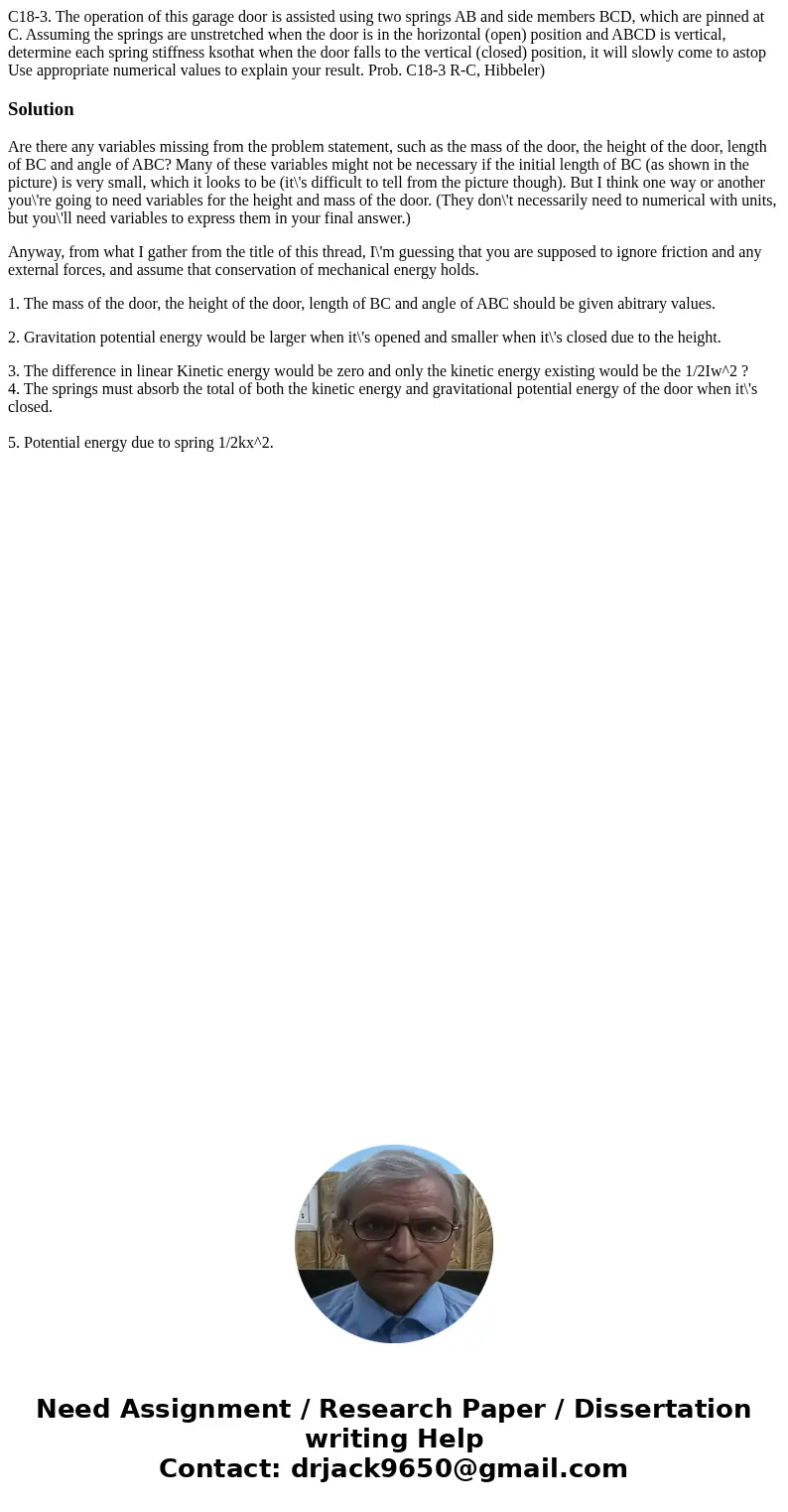C183 The operation of this garage door is assisted using two
Solution
Are there any variables missing from the problem statement, such as the mass of the door, the height of the door, length of BC and angle of ABC? Many of these variables might not be necessary if the initial length of BC (as shown in the picture) is very small, which it looks to be (it\'s difficult to tell from the picture though). But I think one way or another you\'re going to need variables for the height and mass of the door. (They don\'t necessarily need to numerical with units, but you\'ll need variables to express them in your final answer.)
Anyway, from what I gather from the title of this thread, I\'m guessing that you are supposed to ignore friction and any external forces, and assume that conservation of mechanical energy holds.
1. The mass of the door, the height of the door, length of BC and angle of ABC should be given abitrary values.
2. Gravitation potential energy would be larger when it\'s opened and smaller when it\'s closed due to the height.
3. The difference in linear Kinetic energy would be zero and only the kinetic energy existing would be the 1/2Iw^2 ?
4. The springs must absorb the total of both the kinetic energy and gravitational potential energy of the door when it\'s closed.
5. Potential energy due to spring 1/2kx^2.

 Homework Sourse
Homework Sourse